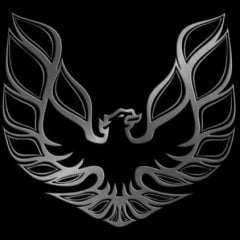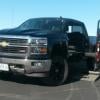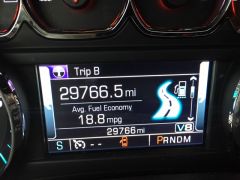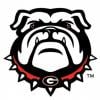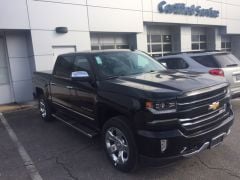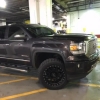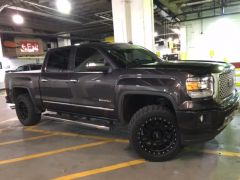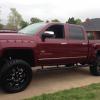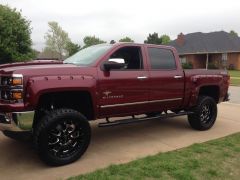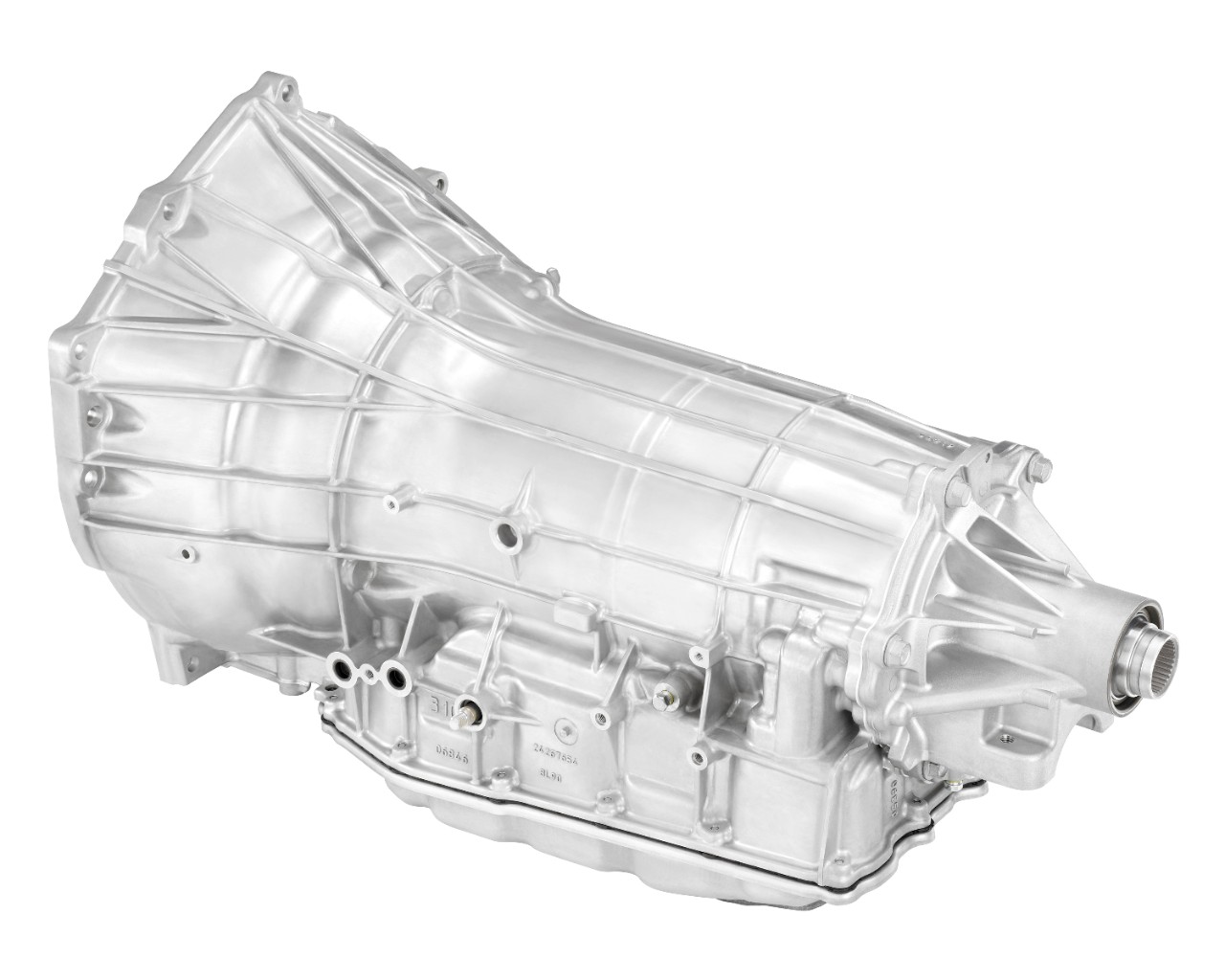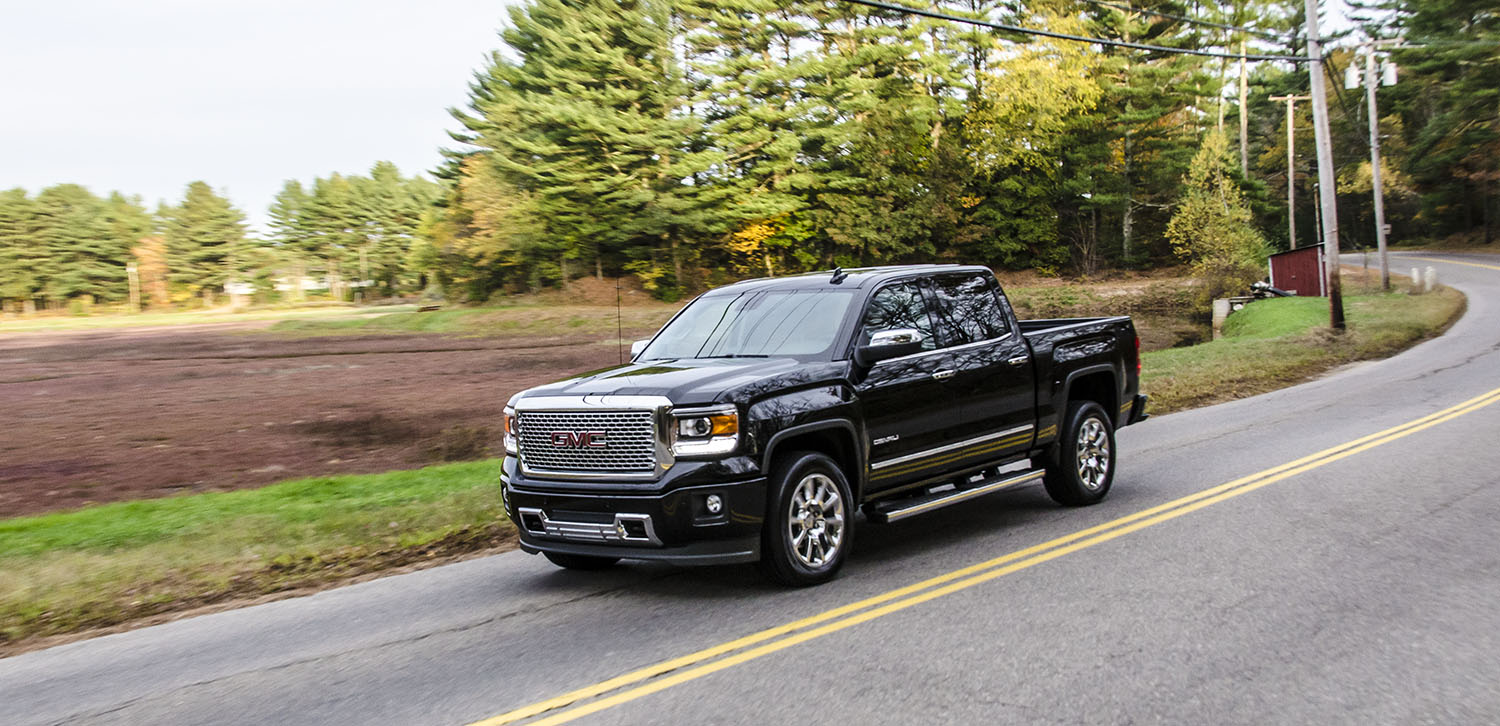Search the Community
Showing results for tags '6.2L'.
-
I dropped the truck of at the dealer this afternoon to have the Whipple installed. They claim it will take 11 hours, so I should have it back on Friday. I installed a Borla True Dual S Type cat-back exhaust with the optional resonators to bring the volume down a bit. It really sounds good! I ordered a new ECM from RockAuto for $200 and sent that to HP Tuners to be modified. The Whipple took less than a month to be delivered, so I was a caught off guard when I got the shipping notification and “had to” (read: wanted to) rush to get everything set up for the install. I want to maintain the good relationship with the dealer I bought the truck from, in hopes that, if there are any warranty issues with the truck that could be questionably related, they will work with me. That, and they have been good to me on the other mods I have had done. It also has the Trail Boss lift with an extra inch to level the front, new wheels with 35X11.50R20 Ridge Grapplers and it has Road Armor Stealth bumpers on the front and rear. I am excited for the the outcome!
- 53 replies
-
- 3
-

-
Hey, I've got a 2019 Silverado with the 6.2L. I want to upgrade the throttle body and intake manifold for some more horsepowers. Has anyone done this on there 6.2? All i am seeing online is throwing the 6.2 manifold on a 5.3. Thanks in advance.
- 4 replies
-
- upgrade
- intake manifold
-
(and 2 more)
Tagged with:
-
I have a 2015 Chevy Silverado with a 6.2L. About 2 months ago I had bent a rod on Cylinder 4. I replaced all the rods, cleaned all the rockers, new lifters (even AFM), new gaskets, plugs, and plug wires. After the truck ran fine for about a week, then threw code P0106, which is a MAP sensor code. And for the life of me I couldn't get the code to stop showing up. If the code is deleted the truck runs perfectly fine for about 30 miles, then it throws the code and has a bogged down, flooded feeling. I've checked everything I can think of and don't know where to go next. What I've checked: Wiring Harness and Ground Connections New MAP and cleaned MAF Air intake gaskets and filter Cleaned Throttle body Checked Fuel Rails Plugs, Wires Compression tests (all at spec or very close) No leaks in intake All fuses After I spent two weeks after work on this thing I decided to take to the shop, they tried a new computer, new sensors, and ran a cylinder leak down test. The truck still is not fixed but I brought it home today because they told me the only option was to send the heads in to be cleaned and new valves. Said the carbon build up was causing this issue but I'm confused as to how that would affect MAP sensor. Especially when compression tests are all right where they need to be. When I replaced the rods I even checked to make sure valves weren't stuck and didn't make contact with head of piston. Anything help and am open to all options. My next step is to take a look at injectors and to replace/clean the valves myself.
-
We have a 2016 Yukon 6.2L which developed a rattle at approximately 60k miles. Initially I believed the source of the rattle was a heat shield, but everything seems to be tight. It has been to the dealer twice and no progress has been made to resolve the issue. The first time they dismissed the problem and called it "normal" and the second time they believe it's a broken baffle weld in the muffler. What do you think? Thanks in advance Video with several angles from under the vehicle demonstrating the issue. The problem only surfaces when the vehicle inters v4 mode. Also, the rattle is so loud it is picked up by the Knock Sensors and it pulling timing. Scan performed with HP Tuners VCM Scanner.
-
There have been multiple threads/posts on what fuel to feed the 6.2 beast. Since GM only recommends premium fuel, it’s become a gray area and most people don’t like gray areas. Not surprisingly, there are passionate opinions on either side. I for one am a facts guy and prefer to go with actual numbers rather than some romantic notions of what someone thinks. It turns out this experiment has already been done for the L86 engine. Our engine is the L87 but it makes the same power and torque as the L86 and it seems the only difference is the addition of DFM for the L87. Summary below 1. Knock: No audible knock was observed with regular fuel. 2. Power: Reduction in power was average of 0.7% which evaluates to 2.94hp. I was actually quite surprised by this, I was expecting more. If you claim you can tell a 0.7% difference, then more power to you. 3. MPG: The biggest gain was fuel economy. They recorded an average of 7.1% reduction in mpg with regular. If you live in an area where premium fuel cost is less than 7.1%, then by all means go for it. Where I live, premium is $15 more on a $45 regular fill-up. I’m not here to tell you what fuel to feed your 6.2 but if you prefer numbers like me, then maybe this can help you make an educated decision. Will probably get some flak for this but that’s ok. AAA Report
-
I decided to cut the exhaust valves and muffler out of my 6.2L Trail Boss and make a 3.5in straight through system that I could clamp together on the driveway at home. I cut at the points where the factory exhaust was 3.5in diameter and used the parts listed below which are all 3.5in diameter too. Here’s exactly what I used: 1x Magnaflow performance muffler 12909 1x Walker 12in heavy duty connector 41983 1x Walker 6in heavy duty connector 41978 4x Walker lap-joint band clamps 33273 These parts will fit together without any modification and fill the gap perfectly when you overlap the ends a bit. It also allows you to put the muffler as far back or forward as you want since you can rearrange the pieces however you like. I love the deep rumble sound but be warned there is a small amount of drone at 1500 rpms when going uphill, not enough to bother me. I did notice the truck has better throttle response and runs smoother. The DFM makes a bit more noise than usual but I’m getting the Range device as soon as it’s released and can just run in L9 until then. I’m not sure about fuel economy yet or where the final muffler placement will be. I just moved the muffler as far back as it’ll go (the middle of the muffler is now directly in line with the gap between the cab and the bed (crew cab short bed). I hope this helps if anyone was considering the same. See photos for more info.
-
I have 2021 AT4 with the 6.2L, just recently a check engine light has come on and am a bit stumped on it. I have read the codes on the ODB11 and the reader I have shows a P2CB9 code but it give me an "information unknown" reading. My GMC app however tells me that nothing is wrong and all systems are normal. I search online and find that the P2CB9 code is a "cooling fan 2 underspeed" however I live in Canada, its -25 degrees Celsius outside and there should be no reason that cooling fan 2 needs to run, or if I need to get it to run, its too cold out to try and get it to engage. Would taking the negative battery post off reset this code? its not like its immediately urgent in my life to get it to the dealership due to im not worried about it overheating, but its blocking my command start from working and its pissing me off because its cold outside. Am I chasing the right rabbit? Thanks in advance
-
Which engine is better? I assume the 6.2 has more power and the 5.3 has better mpg, but how much of a difference is it?
-
Hello Everyone! Before I get started I want to thank anyone in advanced who responds with pertinent information. I'm looking for a replacement exhaust system for my 09 Silverado 6.2L 4x4 Crew Cab/Short Bed. My current system has lots of rust (living in MD, they heavily salt & brine the roads here) and has sprung an exhaust leak right behind the muffler on one of the pipes. I've been searching around (thought it would be easy to find a system) but have not had luck in finding what I have been searching for. There are plenty of systems for 5.3L & 6.0L motors but scant any for 6.2L. On my truck currently is an aftermarket cat back system that was there when I bought the truck (not sure which brand.) It is a single in / dual out muffler with dual pipes going out the bumper. Questions: What is the factory flange diameter at the end of the factory Y pipe? I'm seeing conflicting information (this will help me determine what muffler to buy if I piece meal a system together) If you have any suggested systems, here's what I'm looking for Material: 304L Stainless Steel Volume: Loud/Agressive Configuration: Dual exit at rear bumper I'd consider a long tube header setup w/ high flow cats as well (I would like to maintain all emissions equipment) any suggestions there are also welcome. I can always get a quote from a shop but I wanted to shop around first before I did that.
-
Hello everyone. My first time here. I have a 2021 Sierra AT4 with the 6.2L. I have started to notice a noise when towing our boat that weighs about 6,000lbs. Several times during the trip to and from the lake I hear a rumbling sound that last like 2-4 sec. almost sounds like it can be a jake brake or hitting rumble strips on road. I hit no strips. I can’t recall if it happens on downshift or what. But it does concern me. I drove home from work today with our towing and put it in tow haul mode. It made the noise 3 times in 45 min drive. Any ideas what I’m dealing with? Would it be a bad clutch issue or is this normal? I do have the performance GM installed exhaust and performance GM installed air intake. I called dealer today and they said bring it by and they MIGHT have time to get to it next week. I planned to hit the lake this weekend for Labor Day. Thanks.
-
Hey Guys, I have a 2010 Chevrolet Tahoe PPV with a 5.3L LMG and a 6L80 Trans (MYC) looking to drop in a 6.2L L9H. As far as I understand it is a direct swap. Would I run in to any issues or codes as far as the L9H not having AFM/DOD? I plan on using the 5.3L PCM and having it re flashed to work with the 6.2 Or do I look for a L94 that has FlexFuel, VVT, AFM like the LMG does?
-
Hey Guys, will get straight to the point. I want to see if anyone has knowledge on this before I spend oodles of money at the dealer. Went to start up truck yesterday, it did not seem to want to run at all. After diagnosing and checking codes, I changed MAF. That did not work. Next, I checked the fuses (should have checked these first) I found that the 43rd Fuse was blown based on the codes I had and comparing them to this link: https://www.justanswer.com/chevy/cdkgt-p0097-p0102-p2199-p00f4-codes-tried-reset.html Here are my codes: https://imgur.com/a/yCDBcUL That worked yay! I let it sit for a bit. (10 minutes). Got in, started to drive, was watching the MAF, LOAD %, and Air/fuel on my phone and boom about 3 minutes in, fuse is blown. It has done this consistently. No high in rpm, not heavy load, no huge bumps/bumps at all. just normal driving. with simple checking, I dont see any obvious cable issues. I do not live in snowy/salt climate, it has been hot. Thats all. 2017 Sierra 6.2l Custom Tune was it on a hot morning? yes
-
Hello everyone! Earlier this past week I received my stage 3 cam kit from Texas Speed, and long tube headers w/ catless Y pipe from Kooks, and sent my ECM out to HP Tuners for unlock. This thread will be a mini build thread of the process, and the results later this week after tuning is complete! Part List: - TSP L83TR-3 Camshaft [222/230, .635"/.635", 112 LSA, 32% fuel lobe] - TSP .660" Dual Valve Spring Kit - TSP DOD plug kit - New Pushrods - LS7 Lifters & new trays - Phaser lockout kit [required modification, TSP will be working on a new one based off of our measurements] - ARP bolts - Kooks Long Tubes 1 7/8ths" w/ cat-less race Y-pipe [3" to 3 1/2" collector] - HP Tuners ECM unlock & Custom tune So far, as expected, the block is still the same LT1/L86 as previous generation, however the new 6.2L L87 has a completely different Cam phaser, and the DOD delete plugs are held in by the OEM screws vs. rivet style. My truck currently has 19,XXX miles on it, and is looking to be in pretty good shape for the amount of on and off road abuse that I've subjected it to over the past year. As for the cam choice, yes it is a 5.3L cam, however I have no plans on swapping out the torque converter at this time, and I want to see where the limits of the new 10 speed are before I fully push the envelope. It will still offer a size able power bump in the 6.2L as I have the extra displacement, and after talking with Texas Speed, its the cam that we all agreed would be the best bet. To what I know, I'm the first 6.2L to get cammed, and so I have tried my best to document the entire process for anyone else that is looking to do the same with theirs, and as I found out in the process, the new L87s have a brand new cam phaser vs previous models. So, without further ado, lets get onto some pictures:
-
Zane Merva Executive Editor, GM-Trucks.com 5/18/2018 As it turns out, the leaked figures for the 2019 5.3L and 6.2L V8 engines wasn't far off. That's the good news. The bad news is the SAE certified horsepower and torque will match 2018's numbers exactly. But that doesn't mean the 2018 and 2019 engines are the same. Instead of the 2018's Active Fuel Management, which allows the engine to switch between four and eight cylinders, the 2019 V8's have Dynamic Fuel Management. DFM can adjust the firing cylinders in up to 17 different ways. Theoretically, that should mean improved fuel economy at the same power output. Chevrolet hasn't released any fuel economy numbers yet, so that is just a theory. But if you really like the 2018 5.3L V8 and want to buy it again with the 2019 Silverado, fear not. You can option it with a six-speed transmission for WT, LT, and LT Trail Boss trims. -------------------- 2019 CHEVROLET SILVERADO 5.3L WITH DYNAMIC FUEL MANAGEMENT SPECIFICATIONS Type: 5.3L V-8 VVT DI with Dynamic Fuel Management Bore & Stroke (in / mm): 3.78 x 3.62 / 96 x 92 Block Material: Cast aluminum Cylinder Head Material: Cast aluminum Compression Ratio: 11.0:1 Firing Order: 1-8-7-2-6-5-4-3 Valvetrain: Overhead valve, two valves per cylinder, variable valve timing Fuel Delivery: Direct high-pressure fuel injection with Dynamic Fuel Management Ignition System: High-energy coil-on-plug Horsepower (hp / kW @ rpm): 355 / 265 @ 5600 rpm (SAE certified) Torque (lb.-ft. / Nm @ rpm): 383 / 519 @ 4100 rpm (SAE certified) Manufacturing Location Tonawanda Engine Plant, Buffalo, N.Y. 2019 CHEVROLET SILVERADO 6.2L WITH DYNAMIC FUEL MANAGEMENT SPECIFICATIONS Type: 6.2L V-8 VVT DI with Dynamic Fuel Management Bore & Stroke (in / mm): 4.06 x 3.62 / 103.25 x 92 Block Material: Cast aluminum Cylinder Head Material: Cast aluminum Compression Ratio: 11.5:1 Firing Order: 1-8-7-2-6-5-4-3 Valvetrain: Overhead valve, two valves per cylinder, variable valve timing Fuel Delivery: Direct high-pressure fuel injection with Dynamic Fuel Management Ignition System: High-energy coil-on-plug Horsepower (hp / kW @ rpm): 420 / 313 @ 5600 rpm (SAE certified) Torque (lb.-ft. / Nm @ rpm): 460 / 621 @ 4100 rpm (SAE certified) Manufacturing Location Tonawanda, N.Y.
-
Replaced the stock muffler with the Magnaflow 11229 which has 3” in and out. Initially, the exhaust shop removed both flappers. It sounded very deep and rumbly but a bit louder than I preferred. The drone especially on the highway was unbearable.After emailing Magnaflow support, they recommended I have the shop put the flappers back on so I had both flappers welded back in. The flappers completely eliminated the drone but did quiet down the muffler quite a bit. Now, it’s about 70% as loud as the GM performance exhaust which is the perfect level of loudness I was aiming for. I didn’t want anything obnoxious. Sounds really good when you put your foot in it. Cold start (attached) is equally as lively. If you find the GM performance exhaust a bit too loud for you, then this mod will be the perfect volume level. Just save yourself the headache and money by having the shop install the flappers from the get go. Cost me $220 for muffler and install. $80 to weld the flappers back in. All in all, very pleased with it. AT4 Exhaust.mp4
- 32 replies
-
- magnaflow
- muffler replacement
-
(and 1 more)
Tagged with:
-
I figured I would share some info about my install of the L86 intake and throttle body. I was trying to find some information, but it was hard to come by. Boredom got the best of me and I found out that the L86 was a direct swap for the 5.3L L83. What made it worse, was the fact that the mod was $250 (with factory, non-ported TB). I couldn't not do it The main reason I was sold on this was seeing some low end results, looked liked some good torque gains. I also saw my MAP drop to 94 kPa WOT, making it clear there was restriction. I have the Elite E2 catch can (see notes on it below) so I did not need to get the PCV tube (and you should not either IMO, put a catch can on it). Here is a list of what I ordered: L86 intake 12639087 $105 Throttle body gasket 12639086 $7 Intake port gaskets 12626357 $4 each (need 8) Tony Mamo ported LT1 throttle body 3 7/8 inch diameter and 3 inch long silicone coupler for Airaid tube I ordered it all on Amazon, except for the throttle body. I decided to go with a ported throttle body based on reviews I saw online and the fact that I wanted to do it all once and be done. Tony always does great work so I have confidence buying from him. The throttle body shipped super fast! I have a few pictures attached, but I was too anxious to install everything and didn't take as much as I was hoping. Now for the install. I will try to go off memory the best I can. There are 4 bolts holding the intake cover on and several pop-in wire ties. I have some plastic trim tools and popped them out pretty easily. There are 4 in the back of the manifold cover that aren't quite as easy. By this point, I already had the Airaid tube off. I disconnected the throttle body harness and removed it. I also removed the MAP sensor and one other part (evap purge maybe?) from the front of the manifold. I removed the Elite catch can line as well. I believe at this point everything was disconnected. I removed the 10 manifold bolts and removed the cover and manifold together. I took a few shots down the intake ports. I attached one. I had 7000 miles at the time of the swap. I did Seafoam right before this swap as well. I wish I had some before and after shots for Seafoam. I did a little work to clean up some edges on the intake ports of the new manifold. There were some good edges so I just worked them down. The PCV tube on the L86 manifold sticks down right behind the throttle body. I was tempted to cut and clean this up flush with the inner wall but I left it. You can kind of see it in some of the pictures. One note before putting the new manifold on, put the old intake cover on first. I was not paying attention and missed the back side that would prevent it from being installed with the manifold on the truck. FYI - the 5.3L cover does fit the 6.2L manifold. For the install, manifold bolt torque is 44 in-lbs on the first pass and 89 in-lbs on the second pass. If you number the bolts front to back, driver side 1-5 and passenger side 6-10, the torque sequence is 3-8-9-4-2-7-10-5-6-1 The throttle body bolt torque is 89 in-lbs. The bolts threaded into plastic I just snugged up. I think the MAP sensor bolt is going into a threaded insert so I set that torque to 89 in-lbs as well since the bolt size was the same. I also wanted to share some findings on the Elite E2 catch can. Several people ask about the effectiveness. After the first 100 miles or so I was putting the correct coupler on the throttle body and took a look inside. You can see the oil residue on the PCV tube inside the intake. The Elite E2 is catching about 15 mL/500 miles. Obviously it isn't catching everything, but I did not expect it to. I would be interested to run some tests on others, but I don't have money to blow on that I am happy with the mounting of the can and the performance so far, but I can smell some slight oil pull at idle. I just assume the vapors are just passing through and the catch can is pulling out most of the aerosols. It would be nice if they tested and published some efficiency numbers, if I had to put a number on it I would call it 95% for aerosols. At the same time I did some mods to the air box. The first one I fully cut the insert. The intake noise was horrible and was vibrating stuff in the cab. I trimmed it back and only cut out the bottom opening. Quick calculations the throttle body area was around 5950 square mm. The factory air box has around 7000 square mm of open area. The lower cutout is around 1750 square mm. Looking percentage wise, the lower opening increased the opening more than proportional to the throttle body area change. There is still more intake noise like this, but it is mostly under high load and under 2000 RPM. Now the results of all this. The new intake was able to raise my manifold absolute pressure at WOT in the same gear near 5000 RPM from 94 kPa to around 97 kPa. My MAF frequency was consistently around 8700 Hz. With the new setup, I am around 9000 Hz. I have seen the mass airflow go from 32.0 lb/min to 34.2 lb/min. In the past with a calibrated MAF I (and others) have associated lb/min approximately HP/10. That being said, I don't expect this was a 22 HP gain at all. My point is, lacking any dyno numbers, this was a good move in a positive direction for the truck - less restriction and more air. As far as the throttle body, tip in throttle response is much smoother and accurate for my pedal input. I felt the truck was pretty responsive before with the tune, but there was always this weird spot at low throttle. It wasn't in the driver demand tables, I think it had to do with the odd lips in the throttle body. I don't have a before and after comparison of the same throttle body, but I am definitely glad I went ported after looking at crazy lips of the stock one. Rather than port it myself like I did for my LS1 (which didn't turn out too bad) I figured I would leave it to a pro this time With the electronic throttle control and torque based control of the ECM, it makes it hard to draw conclusions. On a cable driven throttle body, 10% before and after would make the truck feel faster after. That was simply because of the increase in throttle area and getting more airflow for a given input. Seeing these computers are looking for a torque to meet the driver demand, it isn't as noticeable, so I feel the low end gains are more real from a SOTP feel. WOT is hard to tell because the intake noise really threw me off. It sounded like a 100 HP gain after cutting the air box haha I am still running around to see if it did anything to fuel economy, but I keep getting messed up with weather or short drives to do a good comparison back and forth to work. I did average 19.8 MPG on back roads over 20 miles, that was also with the full air box cutout. The best I could do on drives to work had been 21.8 MPG for the last 25 miles and right at 19.0 MPG on a half tank. The 19 is pump verified, I think my calibration for the DIC is off on MPG for the 21.8 number. I suspect it will be closer to 21.5 actual. I have not confirmed the unit updates to that calibration at that high of a fuel economy. As for the tune, all this was post MAF and I had it calibrated already. I saw no change in the MAF, but I still need to go back with a WB for a final pass. I updated the throttle area to 4118 square mm (from a 6.2L tune) and intake manifold volume to 15,010 cubic centimeters (also from a 6.2L tune). I increased the airflow correlation for P0068 tests as well as lowered the power enrich TPS since a lower throttle position will result in a higher load with the increased area (less throttle input for same airflow).
-
American Racing Headers Part number :GM62-14178300LSWC GM Truck 6.2L 2014-2019 Long System These have 150 miles on them. Like new! Cost $1,775 new. Passing a smoking deal on to you. Comes with all components originally sold as a kit from American Racing. ARH long tube headers long system for the 2014-2016 Chevy/GM Truck 6.2L features 304 stainless steel, 1-7/8" primaries, 3" merge collectors, and all the necessary hardware and gaskets for a bolt-on installation. The 2014 & Up GM Truck 6.2L ARH long systems were designed to bolt-on to your factory axle-back or any aftermarket axle-back. Some modification may be required. The American Racing headers require a crossover y-pipe assembly and have converters. Using the catted crossover pipe cause very little restriction and they help to control emissions. Product features on this system includes: 100% Made in the USA - Never Outsourced Made entirely of 304 stainless steel 3/8" thick laser-cut flanges for a warp-free seal Hand-ported TIG welded inlets Optimized primary tube routing for superior fit and performance Merge collectors with scavenger spikes Catted systems feature 200 cell metallic substrate catalytic converters for extreme durability
-
Zane Merva Executive Editor / Publisher - GM-Trucks.com May 24th, 2019 A few days after we got a look at the changes for the 2020 Sierra, Chevrolet is letting on to what's going to change for the 2020 Silverado. Surprise, it's actually some significant stuff. More 6.2L First up, the 6.2L makes its long awaited move to trim levels below LTZ. Now Custom Trail Boss, RST, and LT Trail Boss trim levels can also order the 420 horsepower engine option. As owners of a 2019 LTZ with the 6.2L , we highly recommend it. More 10-speed LT Trail Boss and High Country with the 5.3L engine will upgrade to the all new 10-speed transmission. This move was more expected as GM flushes out the 10-speed into more models and slowly phases out the 8-speed and 6-speed transmissions its sold for years. A New 3.0L Diesel The new light duty Duramax makes it's debut in 2020. It will be available on LT, RST, and above trim levels. This engine will also come with the new 10-speed transmission. Smaller changes Other additions to the lineup for 2020 include adaptive cruise control and a new "transparent trailer" camera system that displays up to 15 different views. Order Guide Deletions (GE0) Oakwood Metallic (PDT) High Country Premium Package (R13) WT Appearance Package New Features (DPO) and (DQS) Vertical Trailering Mirrors (KSG) Adaptive Cruise Control now included in (PDJ) Safety Package II Changes (MQB) 10-speed transmission is now standard on 4WD High Country models with (L84) 5.3L EcoTec3 V8 DFM engine and LT Trail Boss (UV2) HD Surround Vision is replaced with (UVS) HD Surround Vision with Two Trailer Camera Provisions (CWM) Technology Package now includes (UVN) Bed View Camera (PCV) WT Convenience Package is now available with (ZW9) pickup bed delete (PTT) Tire Pressure Monitor System becomes (PTT) Tire Pressure Monitor Sensors (V46) and (VJH) Chrome bumpers are now free flow on 1WT (Q5U) 17" Bight silver painted aluminum wheels are now free flow on 1WT 2020 Chevrolet Silverado Photos
- 34 replies
-
- 2020 silverado
- 2020 chevrolet silverado
- (and 10 more)
-
-
- fuel economy
- 6.2l
-
(and 1 more)
Tagged with:
-
-
Our experience with the all new Camaro has been outstandingly positive. Just last fall, GM-Trucks.com drove a 2016 Camaro SS over 1,600 miles from Minneapolis to Salt Lake City in an epic road trip. The SS turned out to be a strikingly composed vehicle. In our time with the last generation Camaro ZL1, we were equally impressed but the vehicle's extra weight made it harder to control on the track. This generation is over 200-lbs lighter. The all new ZL1 will dial this lighter generation pony car up to the proverbial "11". Specialized bodywork on the ZL1 improve aerodynamics and cooling. A larger front splitter, unique rockers, larger rear spoiler and wide front fenders are designed to keep the Camaro ZL1 stable at high speeds. A special "flow-tie" Chevrolet bowtie insignia is open to allow more airflow to the engine compartment. Inside the ZL1 has standard Recaro front seats, a suede flat-bottom steering wheel, and suede shift knob. Chevrolet's performance data recorder (PDR) is also available. The ZL1 also comes with unique 20-inch forged aluminum wheels with exclusive Goodyear Eagle F1 Supercar tires [285/30ZR20 Front / 305/30ZR20 Rear]. Those huge tires will get help stopping with massive 15.35 inch rotors squeezed by six-piston Brembo brakes up front. 11-heat exchangers throughout the Camaro ZL1 make this four-person car track ready straight from the dealership. Pricing and availability have yet to be announced.
- 21 comments
-
- supercharged
- automatic
- (and 9 more)
-
From the album: 2014 6.2L GMC Denali
-
- 2.25 level
- 295/55r20 procomp mt2s
- (and 5 more)
-
From the album: Untitled Album
2014 CC LTZ Z71 6.2L Black Widow Package by Southern Comfort -
Late last night, a GM-Trucks.com member noticed that the 2015 Silverado fuel economy numbers had been updated at fueleconomy.gov. Only available with the 420-horsepower 6.2L V8 engine, GM's new 8-speed will net Silverado and Sierra owners 1-additional MPG in both city and highway driving. We will report on the "official" numbers if and when the company releases them publicly. Compared side by side to the 2014 6-speed View attachment: 2015MPG.jpg(Thanks to gone_fishing for this graphic)
-
As many truck and SUV owners know, the performance of the transmission is a big part in how confident you feel behind the wheel. While only a single part in a complex powertrain, the transmission is the glue that links an engine to the road. When the transmission hesitates, the entire vehicle’s performance suffers. A great vehicle needs an equally great transmission. After only a few minutes behind the wheel it became obvious that shifts are quicker and smoother than the past generation 6-speed. Having two more gears allows the engine to stay in the sweet spot of the RPM range more often. Tip into the throttle and with no drama the 8L90 quickly snaps to the right gear. However, the most noticeable change is how well shifts are managed by the faster next generation transmission controller. Dependable and crisp transmission performance is a benefit in any situation. A slight bump in fuel economy is the icing on the cake, allowing for a +1mpg bump in fuel economy. Under full throttle we found gear changes effortless, quick, and solid. Under light throttle we could barely notice the vehicle had shifted at all. Where the past generation 6-speed sometimes gets confused or doesn't shift as cleanly as we’d like, the new 8-speed was always seemed on point. Unfortunately, we're slightly surprised to see that manual shifting with the 8-speed hasn't changed. Commands to select a specific gear using the shifter stalk are still only a suggestion, with the transmission controller having a final say. In our short test, shift requests sometimes took seconds if the truck didn't agree with the gear we requested. We drove an 8L90 equipped 2015 Sierra Denali and Yukon Denali on urban streets during rush hour. We did not get an opportunity to measure fuel economy. While only available with the 420-horsepower 6.2L EcoTec V8 during model-year 2015, expect this 8-speed to be available in the rest of the full-size truck and SUV line in the near future. When we have an extended amount of time with another 8-speed truck we will report back with fuel economy figures and more driving impressions.
- 21 comments
-
- 8l90
- hydra-matic
-
(and 8 more)
Tagged with:

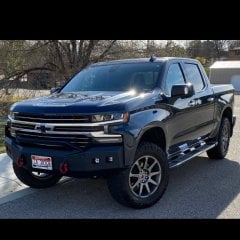
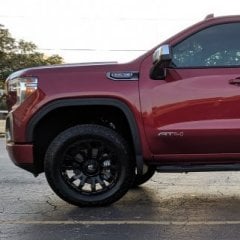
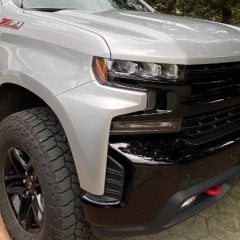
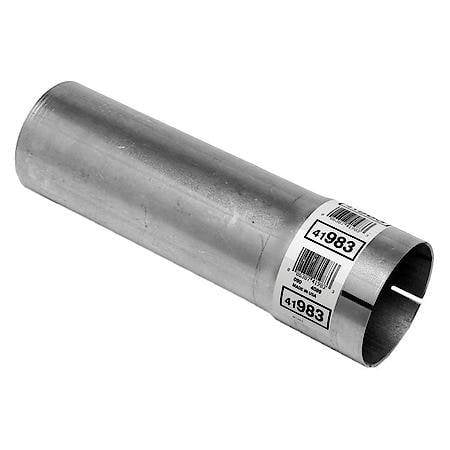
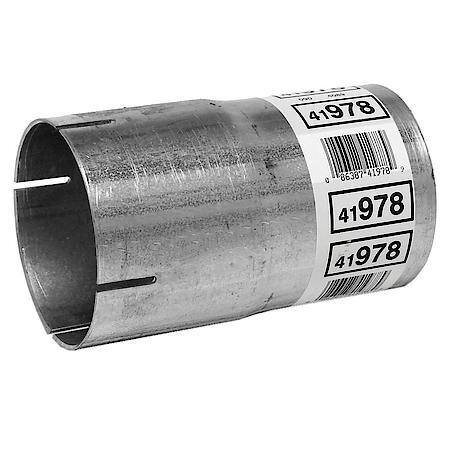







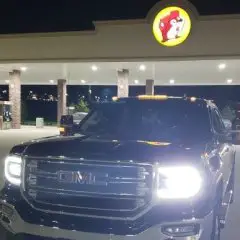


.thumb.jpg.5b87d96df937c55eb0463966978abdaa.jpg)





